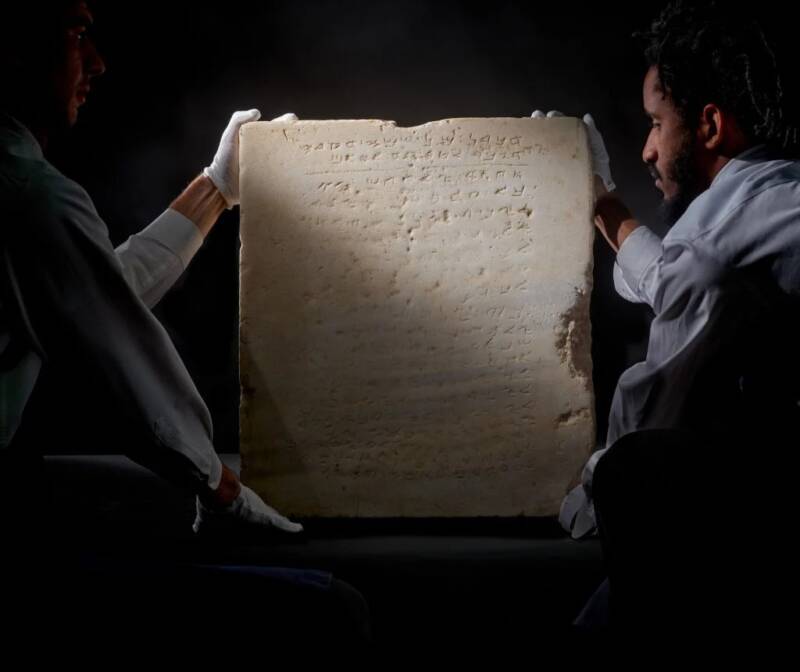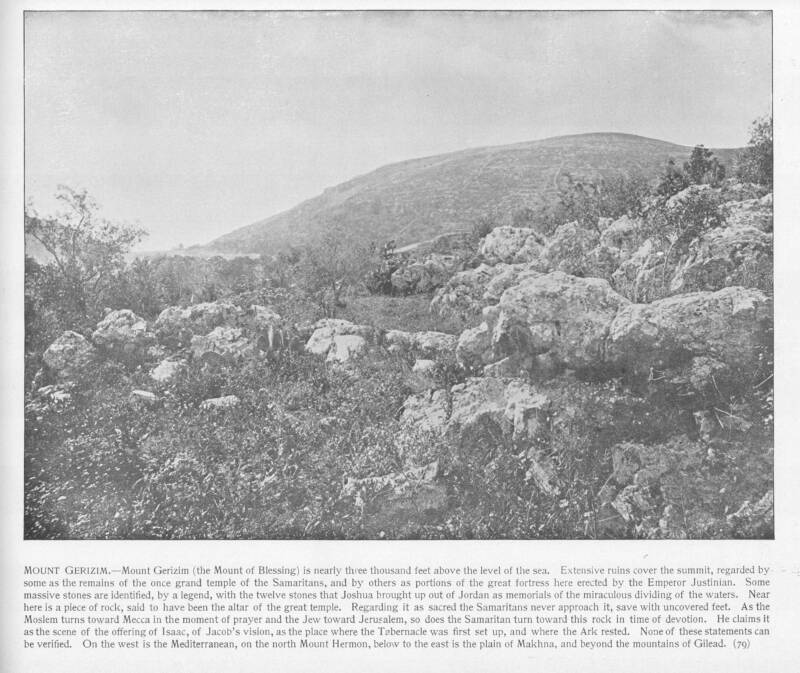The 1,500-year-old artifact was found in 1913 in Israel, but it took decades for scholars to realize its significance.

Sotheby’sThe tablet is expected to sell for between $1 and $2 million at auction.
The story of the Ten Commandments is one of the most important in the Bible. Dictated by God to Moses, the directives include the famous principles of honoring one’s parents, not stealing, and observing the Sabbath. Now, the oldest known engraving of the Ten Commandments is set to be sold at auction, where it’s expected to draw bids in the millions.
Some 1,500 years old, the stone tablet is a remarkable religious and historical artifact — and a symbol of one of humanity’s “most enduring moral codes.”
From The Southern Coast Of Israel To Sotheby’s

Sotheby’sThe 1,500-year-old engraving was first discovered in 1913.
The story of the Ten Commandments engraving began back in 1913. According to a statement from Sotheby’s, the auction house overseeing the sale, it was first uncovered during railway excavations along Israel’s southern coast, near the location of many early synagogues, mosques, and churches. However, the significance of the artifact was overlooked for 30 years.
Incredibly, the stone was not sent to a museum or a religious institution. Instead, it was used as a “paving stone” in front of a local house. For three decades, it lay face up as people walked back and forth over its faded inscriptions.
In 1943, however, the stone was sold to a scholar who recognized its importance. They determined that the two-foot-tall, 115-pound marble tablet was a 1,500-year-old Samaritan engraving of the Ten Commandments that was probably once displayed in a synagogue or a private home. Inscribed with an ancient Hebrew script, it includes nine of the original commandments (leaving out “Thou shalt not take the name of the Lord in vain”) as well as a new directive to worship on Mount Gerizim, a holy place to Samaritans.

Public DomainMount Gerizim as seen in 1894. The mountain, located in the West Bank, has been a holy site for Samaritans for thousands of years.
Whether it was held in a residence or a synagogue is unknown, but scholars suspect that the original site of the engraving was probably destroyed during Roman invasions between 400 and 600 C.E. or by the 11th-century Crusades.
Now, someone has the chance to own the stunning 1,500-year-old artifact.
A ‘Vastly Important Historic Artifact’

Sotheby’sMore than a century after it was first discovered in Israel, the 1,500-year-old Ten Commandments engraving is set to go up for auction — where it could sell for $2 million.
As Sotheby’s wrote, the 1,500-year-old engraving of the Ten Commandments will be on display between Dec. 5 and Dec. 17. Then, it will be put up for sale by the auction house’s books and manuscripts department on Dec. 18. Sotheby’s suspects that it will sell for between $1 million and $2 million.
“This remarkable tablet is not only a vastly important historic artifact, but a tangible link to the beliefs that helped shape Western civilization,” Richard Austin, Sotheby’s Global Head of Books & Manuscripts, remarked in the Sotheby’s statement. “To encounter this shared piece of cultural heritage is to journey through millennia and connect with cultures and faiths told through one of humanity’s earliest and most enduring moral codes.”
Indeed, the artifact represents a long arc of human history, from its creation 1,500 years ago by the Samaritans to its destruction — possibly by Romans or Crusaders — to its final rediscovery in 1943. And the text on the stone represents something even more ancient — some of the very first guiding principles embraced by mankind.
After reading about the 1,500-year-old engraving of the Ten Commandments set to be sold at auction, discover the story of the Ark of the Covenant, the sacred chest said to hold the original Ten Commandments. Or, see how the Holy Grail came to be one of the most coveted objects in Christianity.





